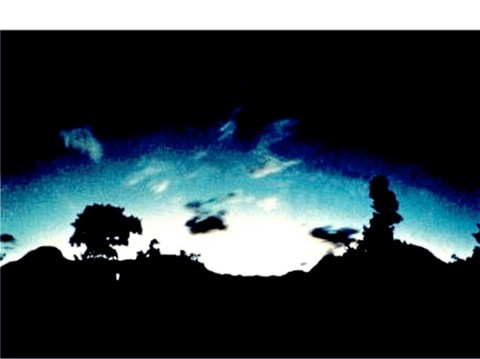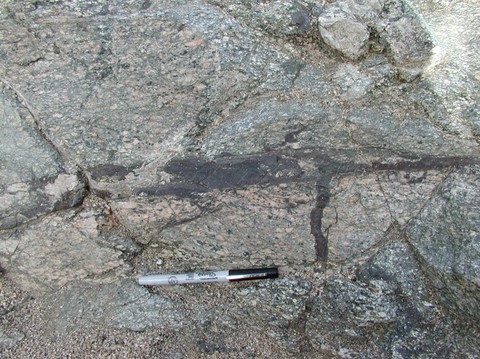The tangible proof of earthquake lights
High-power electric currents underground
During the night of February 27, 2010 two men were driving back home from a party near the city of Talca in Chili, when suddenly glaring streaks of light illuminated the dark. During several minutes, the roof-top camera on their car captured mysterious flashes of lightning which seemed to come out of the ground. Almost at the same time, an earthquake shook the region.
Scientists greeted the video with enthusiam, recognizing in it a decisive clue pointing to a phenomenon which has long been downplayed as legend: earthquake lights.
In Antiquity already, survivors of strong earthquakes reported seeing „immense columns of fire.“ Yet it is only in 1966 that a first document became available: a Japanese dentist from the town of Matashiro, T. Kuribayashi, having stepped outdoors during the night of February 26 with his camera, offhandedly pushed on the trigger when he witnessed a bright sheet of lightning. Then a quake rattled the ground.

T. Kuribayashi's 1966 photograph of an earthquake light
For a long time scientists still didn’t dare to probe into this phenomenon, for fear of being considered cranks. For the best part of the past ten years though, especially in the USA and in Japan, new teams have been searching for evidence that the ground can indeed dispatch flashes of lightning in the direction of the sky. A team around Eric Ferré from the University of Southern Illinois is now presenting tangible proof.
They claim to have found it in stones, as they reported on the annual conference of European Geosciences (EGU) this year in Vienna. Scientists are now pondering if underground electric current might be able to gives us a warning of coming earthquakes.
Their exhibits – so-called pseudotachylites – are rarities. "They are as precious to us as the holy Grail,“ says Ferré. The stones originate directly in the earthquake foci, where packets of stones weighing millions of tons rub against each other and make the ground shake: along a narrow line following the collision zone, barely more than a centimetre wide, the rocks heats up to 1,700 degree Celsius, to the point where they glows white and melt. After a few seconds, the mush cools off and agglutinates into a thin layer of glass.

Ferré and his colleague Natalie Leibovitz, of Southern Illinois University, have extracted from various locations such stones displaying a characteristic vein of glass, and they examined them in the lab. Their analyses show that it is indeed possible that, on the occasion of earthquakes, high-powered electreric current flow through the ground.
According to the researchers, this is suggested by the extreme magnetizing of the minerals in the rocks: magnetic lines in the minerals in the vicinity of the glass veins display different directions than minerals which are father away from this seismic seam.
Moreover, particles containing iron stand in ranks and files, like soldiers on parade. Measurements point towards a magnetic field the effect of which is thousands of times stronger than it is in the surrounding stones, says Ferré. Only enormous electric currents can explain that the minerals order themselves in such a strict way.
Three possible explanations must be considered; first: fallen powerlines. Second: a stroke of lightning from a thunderstorm. Third: lightning from underground.
"The first two explanations can be excluded,“ says Ferré. The examined pseudotachylites come from deep underground, surface electric current, whether from power-lines or storms, is out of the question. There only remains one possibility: high-power current which originates underground.
Despite the age old tradition accounting for them, this is a surprising discovery, because rocks normally act as an insulator, blocking electric current.
But earthquakes, the researchers are surmising, shatter the atoms of the minerals along the collision zone between the stone masses, so that electric tension builds up – and an electric current shoots through the minerals. When the electric current reaches the earth surface, the same phenomenon happens as during a thunderstorm: the electric tension between ground and air discharges – lightning occurs.
Scientists are now researching in complex experiments what exactly may be happening when underground lightning is ignited. It is acquired that mighty amount of energy are being discharged, but not much more is known. It might explain why, after the catastrophic earthquake in Kobe in 1995, scorched tree-roots were found, according to Ferré. A few meters deep, geologists discovered pseudotachylites – fresh clues for high-power current having run underground.
Axel Bojanowski
Original article published in Der Spiegel, June 8, 2015
Translated from the German by Anne-Marie de Grazia

